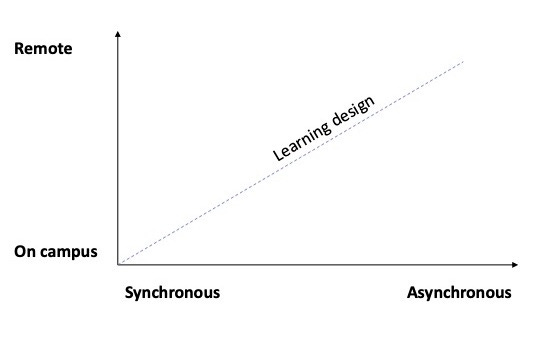It is vitally important that, in an increasingly competitive higher education market, Universities continue to provide both a compelling and contemporary learning experience. This has become even more apparent since the COVID-19 pandemic given an increase in the reported expectations of learners for that quality of learning experience and flexibility in their study options. Universities need to ensure that the learning experience is designed to maximise the ability of students to engage and succeed in their increasingly digital world.
The contemporary learning environment begins with an understanding that learning is a process of communication; a desire to communicate, transmit or facilitate knowledge and ideas, coupled with an understanding of the means and media through which such communication might be facilitated. To that end, the practice of education has often found itself leading in the utilisation of ‘technology’, particularly communication technologies, as mechanisms to ‘deliver’ learning. This is particularly true in Australia where the challenges of remoteness and the need to ‘teach’ across distance saw the early development of distance learning coupled with the use of technology to enable it (e.g., the‘School of the Air’).
At its simplest, teaching is the means by which a teacher facilitates the learner’s engagement with a learning experience, thereby enabling them to access and understand knowledge; and, in more advanced stages, construct their own ways of knowing, understanding, and interpreting that knowledge. Teaching can be facilitated across a range media. But it is not the medium that is important but the way in which the teacher uses it to facilitate the learning (and the learner uses it to learn).
The increased complexities of the contemporary learner’s life have aligned with rapid advances in information and communication technologies over the past 30 or more years. This has meant that, for educational institutions, learning has become an activity that our learners have to increasingly prioritise into their already busy lives.
If we are to continue to design an engaging and accessible education experience, we must:
understand the essence of good pedagogical (andragogical) practice;
be familiar with the advantages and disadvantages afforded across a range of approaches and technologies;
be fully aware of the challenges our students have in accessing and engaging with their learning; and
design that learning accordingly.
The onus then is on us to use 1), 2) and 4) to ensure we address 3) across the physical and virtual domains, by synchronous and asynchronous means.
If it is now acknowledged that, in a contemporary educational context, learning needs to occur in both the physical and virtual domains, accessed both synchronously and asynchronously, it follows that learning institutions must clearly describe, and consistently apply, the modes through which they facilitate learning, and the design of the experience that learners can expect.
Once we have answered these questions, we are then better able to ensure that their learning experience is deliberately and constructively designed to maximize their ability both to access and engage with it. As educators we want to know, amongst other things:
Where is that student accessing the learning experience from (i.e., are they ‘on campus’, remote from campus or mixing between the two)? and,
What is the predominant means by which our students will be engaging with their learning (i.e., will it be predominantly synchronous or asynchronous)?
These are key considerations that require proactive determination to ensure that we design the best possible learning experience. In short, if it is a synchronous and ‘on campus’ learning experience, with access enhanced by means of the use of technology, then that needs to be made clear and deliberately designed for, including considerations as to which components of the learning will be accessible via which medium. This is, the role and function of learning design which mediates the balance between remote and on campus, and between synchronous and asynchronous, as shown in Figure 1.
Figure 1: The learning design balancing act (Ashford-Rowe, Russell & Maynard, 2020 - unpublished)
Once the principles that inform the pedagogical paradigms are clear, then consideration can be given to the means and media of delivery, including detailed consideration as to:
the design and layout of the physical learning environment;
the installation and configuration of the technology required in that physical learning environment;
the design and enablement of the interface between the physical and the virtual environment, to enable remote and asynchronous access; and
the integrations across the virtual systems to ensure that the learning experiences and the artefacts from it (i.e., assessment outcomes) are parsed seamlessly between systems.
For any contemporary educational enterprise operating at scale, there is a requirement to be able to design, deliver, support, scale, marshal and maintain both the physical and the digital environments, including understanding the ways in which each is used to enhance both teaching and learning experiences. This requires a focus on the digital transformation of the learning experience to enable the seamless delivery of an increasingly digitally enhanced and high-quality experience that fully embraces technologies that support active and personalised learning. Ideally, harnessing technology in this way both maximises learner access and better enables learner engagement.
To succeed however, such an approach needs to be driven by clearly articulated frameworks that support an enabling digital ecosystem of policies, procedures, processes, systems, services, and tools all orientated towards assuring holistic digital transformation.
Professor Kevin Ashford-Rowe, Pro Vice-Chancellor (Learning and Teaching), Queensland University of Technology



